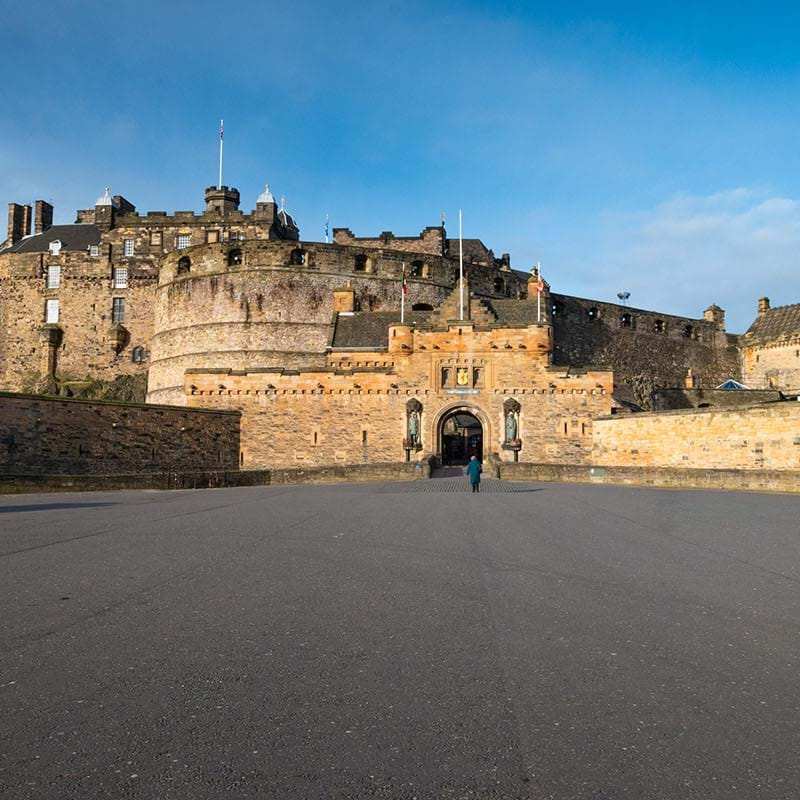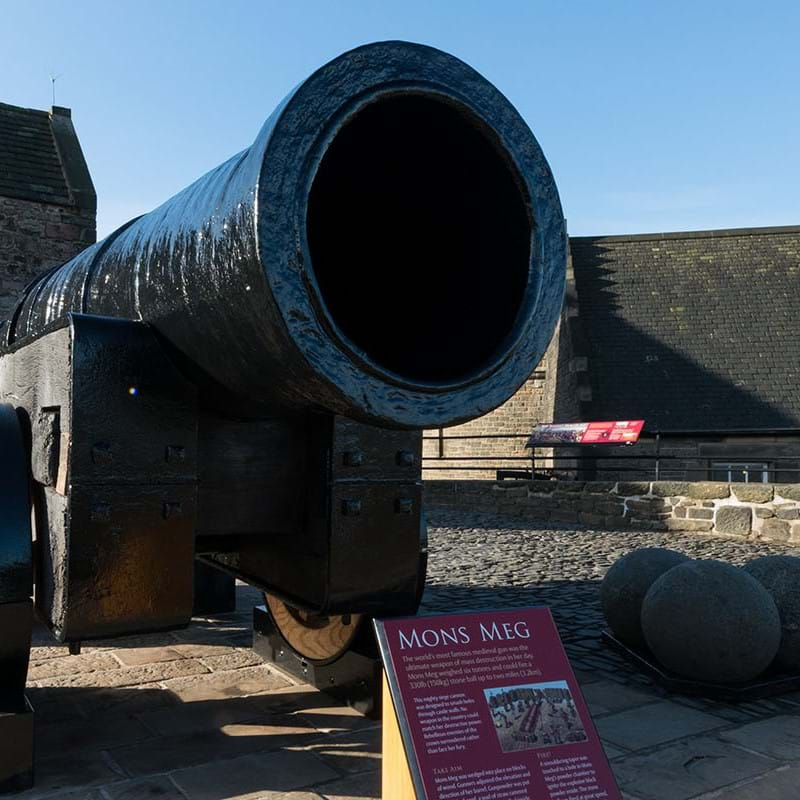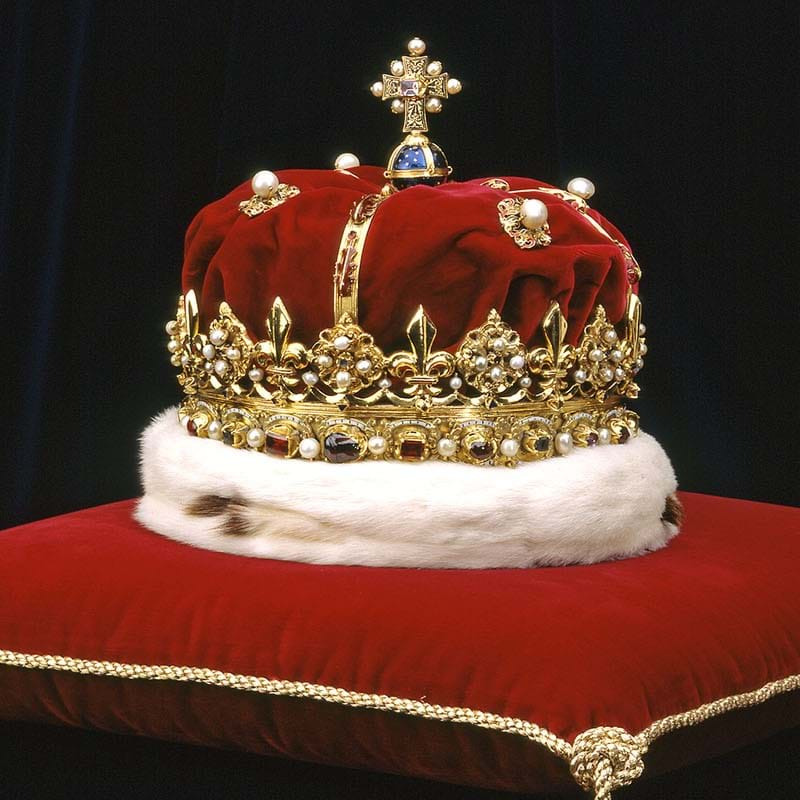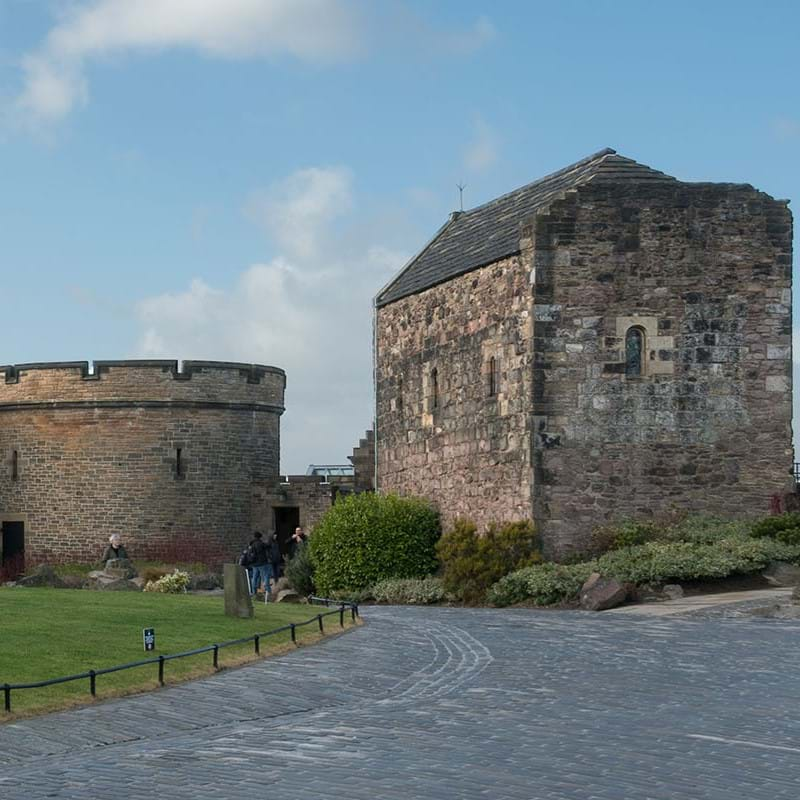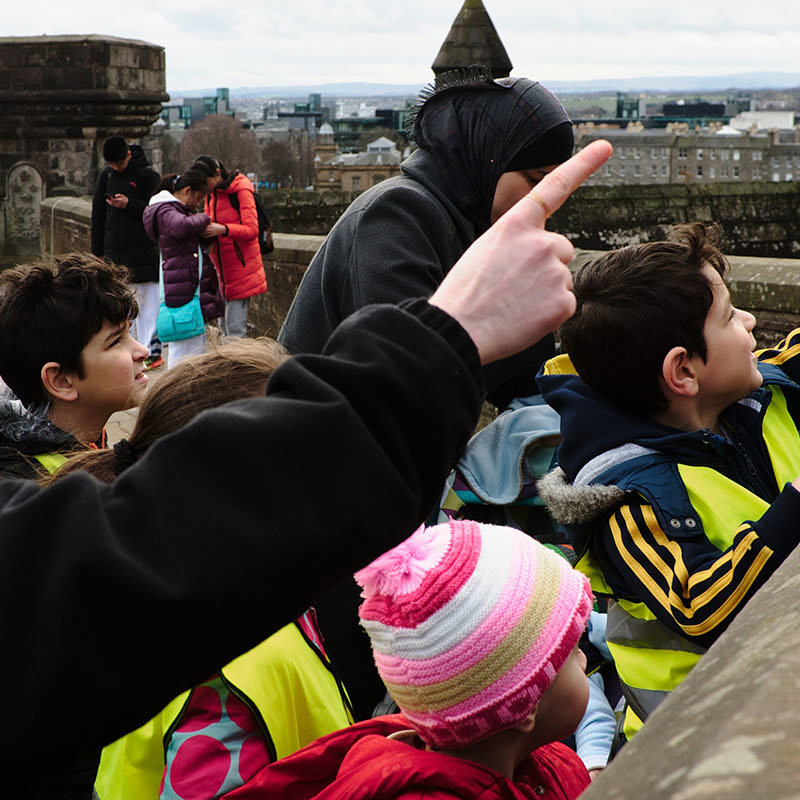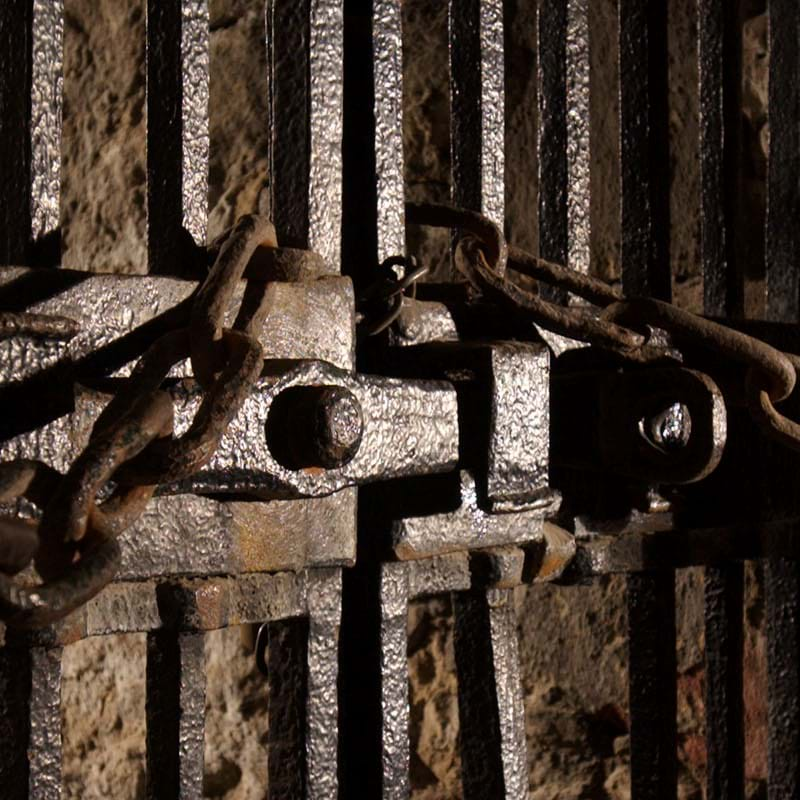
Military March
Many have tried to besiege this mighty fortress – and some succeeded. Discover Edinburgh Castle’s military connections, which continue today.
2
-
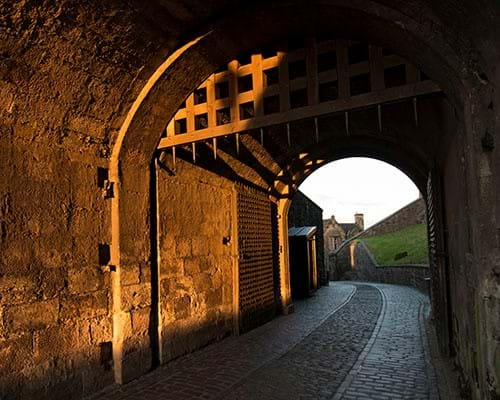
Portcullis Gate
Pass beneath the spikes of a raised portcullis. This fortified gateway was built almost 450 years ago in the wake of the devastating Lang Siege. Three sets of heavy wooden doors once sat alongside the iron gate to ward off intruders. The top floor – Argyle Tower – was added in the 1880s. Look for the lions, a symbol of royalty.
-
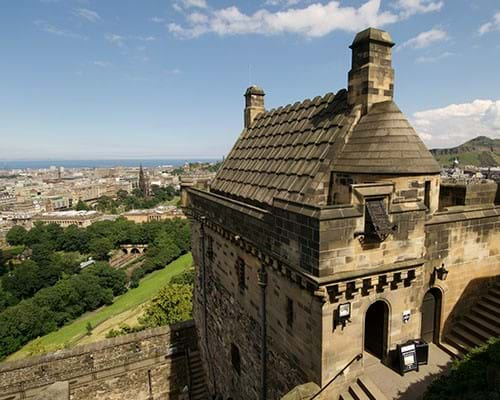
Fight for the Castle - Argyle Tower
The Argyle Tower (which shows the exhibition) is currently closed. Telling the story of Edinburgh Castle in the Wars of Independence, this exhibition uses animations, projections and medieval objects found here to bring this dramatic episode in the stronghold’s heritage to life. The vaulted chamber is dominated by a huge model trebuchet that towers above a stone ball believed to have been fired at the castle during the siege of 1296, the first time such giant catapults are recorded as being used in Scotland. The exhibition sits directly above the gateway that was the focus of a daring attack at the end of the siege of 1341.
-
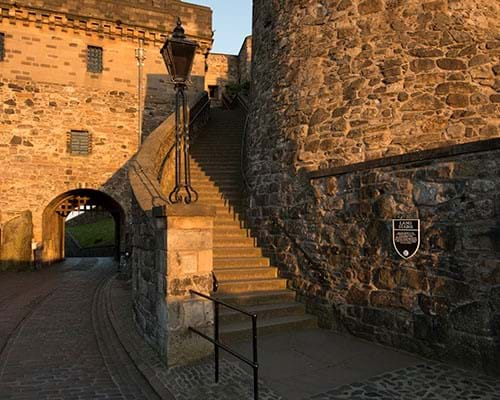
Lang Stairs
Count all 70 steps on the most direct route to the summit of the Castle Rock. This great flight of stairs once formed the original entrance to the castle. The gentler alternative route that winds up and around the cobbled hill was created in the 1600s for moving heavy guns.
-
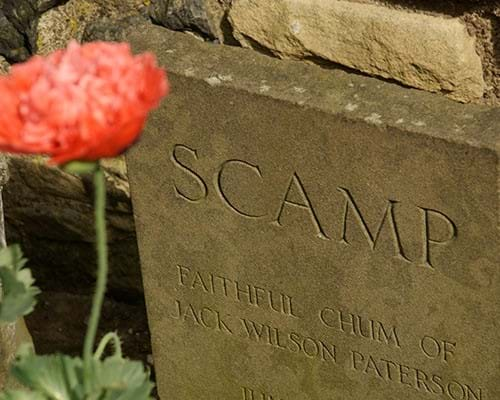
Dog Cemetery
Dobbler and Winkle are among the four-legged friends buried here since the 1840s. Some of the dogs were regimental mascots, others the beloved pets of army officers or even the castle governor. It wasn’t unheard of for a hound to travel the world on campaign with its military master.
-
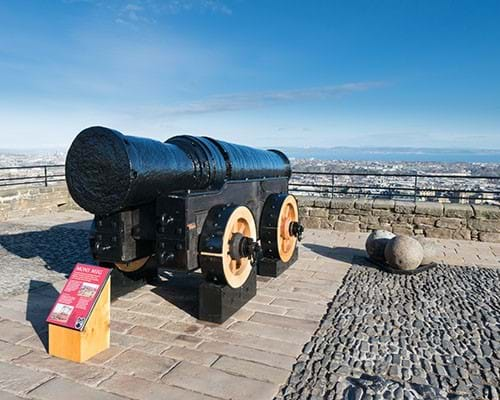
Mons Meg
Stare down the barrel of this six-tonne siege gun and imagine its awesome power. Given to King James II in 1457, Mons Meg could fire a 150kg gunstone for up to 3.2km (2 miles). One fired over the city to celebrate the marriage of Mary Queen of Scots landed in what is now the Royal Botanic Garden.
-
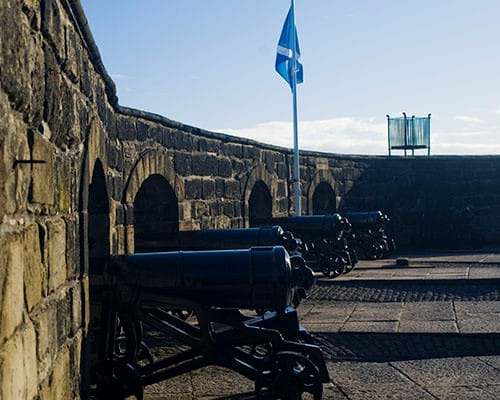
Half Moon Battery
It is the curved rampart of the Half Moon Battery that gives Edinburgh Castle its distinct profile. This imposing structure was built over and around what was left of David’s Tower following the Lang Siege of 1573. For more than 200 years, bronze guns known as the Seven Sisters armed the battery.
-
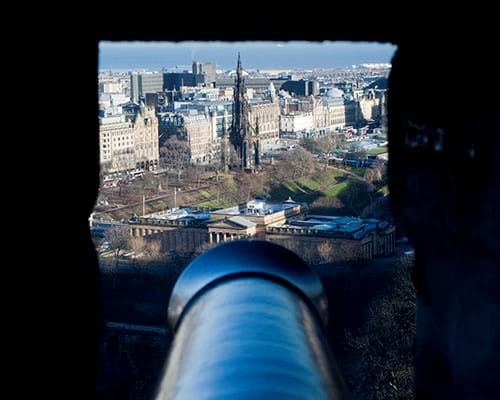
Forewall Battery
Check out where the cannons on this battery are aimed. Built in the 1540s, the structure roughly takes the line of the castle’s medieval defences. The iron basket once held a beacon, which was lit to raise the alarm. The Fore Well, almost 34m deep, was the castle’s main water supply from the early 1300s.
-
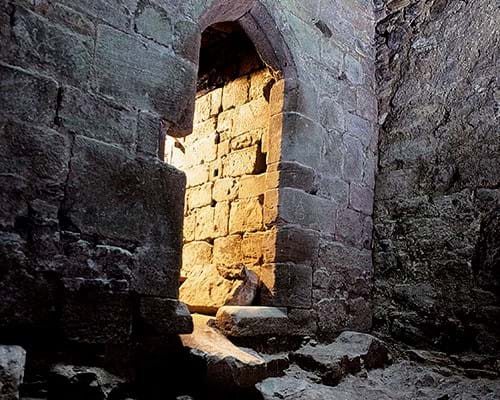
David's Tower
Descend below the Half Moon Battery to see the remains of what had been the heart of the castle in the late 1300s. Though King David II died before his colossal tower was complete, it served as the royal residence for nearly 100 years. Destroyed in the Lang Siege, only atmospheric ruins survive today.
-
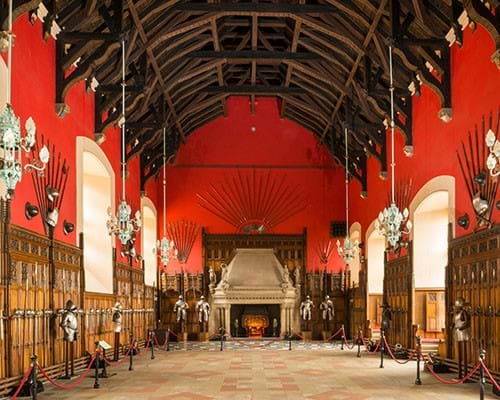
The Great Hall
Gaze up at the original hammerbeam roof and carved stone corbels of the impressive hall where King James IV held state ceremonies. Completed in 1511, the Great Hall was restored to its former glory in the 1880s – though its roof was left untouched. A remarkable collection of weapons and armour is on display.
-
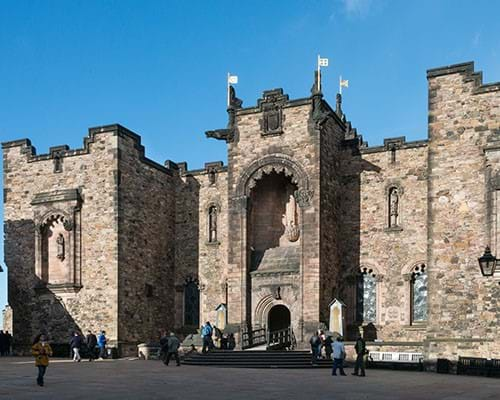
Scottish National War Memorial
Reflect on the sacrifice made by those who fell in the First and Second World Wars and subsequent military campaigns. This remarkable memorial was opened in 1927, drawing on the talents of some of Scotland's finest artists and craftsmen and women.
-
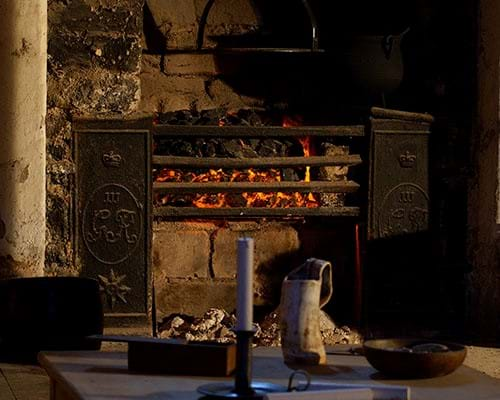
Prisons of War Exhibition
Pirates and prisoners of war were held in the vaults below the Great Hall in the 1700s and 1800s. Learn about the sailors locked up here, among them many Americans and a five-year-old French drummer boy captured at the Battle of Trafalgar. One successful escape attempt saw 48 inmates flee.
-
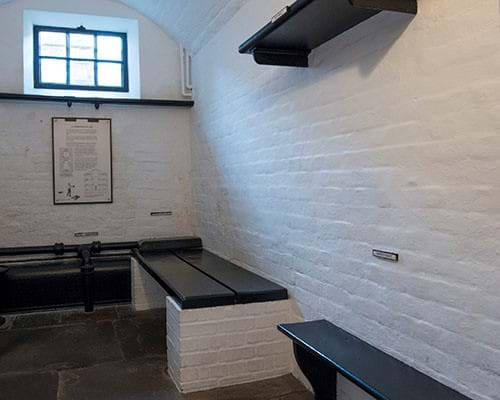
Military Prison
Peek inside this tiny Victorian prison, housing just 16 cells. ‘Drunk on guard’ was one of the offences that could get a soldier locked up. Inmates had to endure solitary confinement and hard punishment such as working a treadmill for hours on end.
-
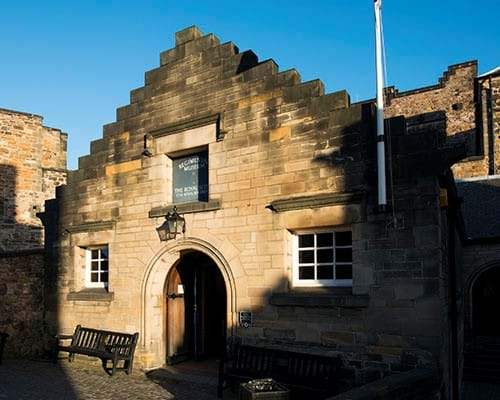
Royal Scots Museum
Explore the heritage of the Royal Scots, until recently the British Army’s oldest serving regiment. This independent museum’s stories span more than 350 years of campaigning. Learn how the regiment earned the nickname ‘Pontius Pilate’s bodyguard’ as well as the six Victoria Crosses on display.
-
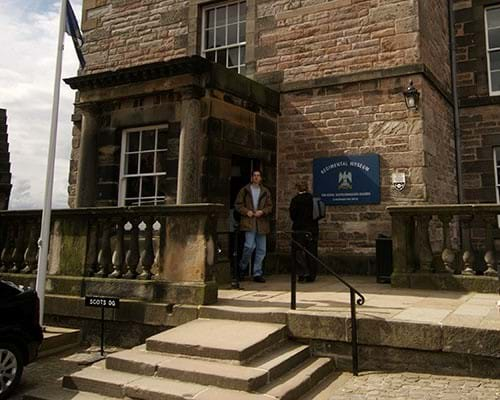
Royal Scots Dragoon Guards Museum
Delve into the history of the Royal Scots Dragoon Guards, the senior Scottish regiment in the British Army. Treasures in this independent museum include a French Eagle and Standard taken at the Battle of Waterloo. See the epic cavalry charge that led to their capture in a painting in the Great Hall.
-
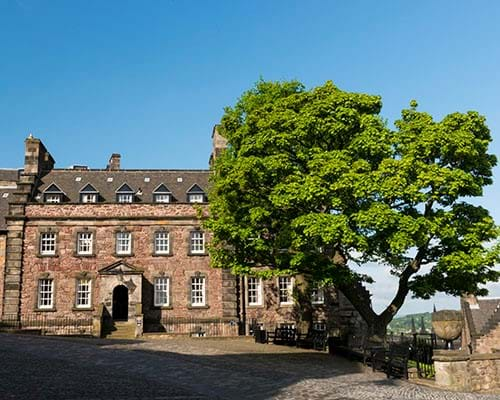
Governor's House
Admire the elegant exterior of the Georgian lodgings built in 1742 for the castle’s governor. The house is still used for its original purpose and so isn’t open to visitors. Ordnance Survey’s origins may stem from the basement: mapmaker William Roy stayed here during the Military Survey of Scotland.
-
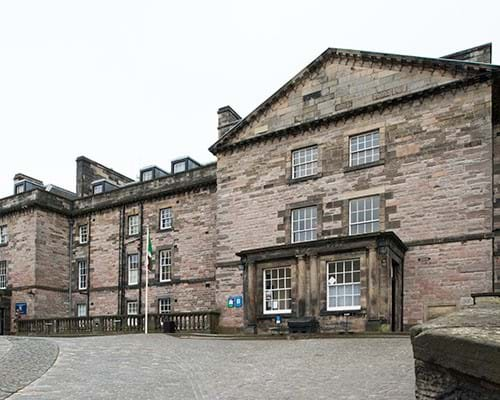
New Barracks
A full infantry battalion – some 600 men – was once housed in this seven-storey building. It was built in response to the threat of a French invasion, but the Napoleonic Wars ended not long after its completion. As the military continues to use the New Barracks today, it is off limits to visitors.
-
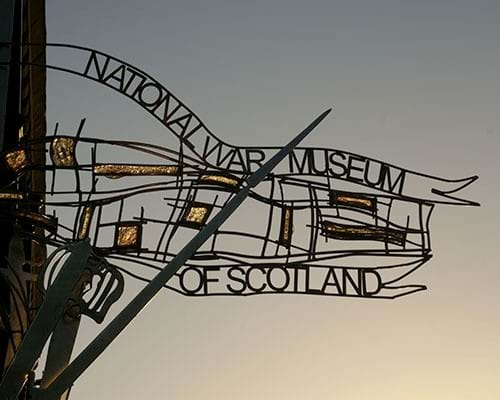
National War Museum
Take in Scotland’s proud military history from the 1600s to the present day. Get up close to iconic paintings like The Thin Red Line and see military kilts and bagpipes and modern-day weaponry. Say hello to Bob the regimental dog and find out how he earned his medal in the Crimean War.
-
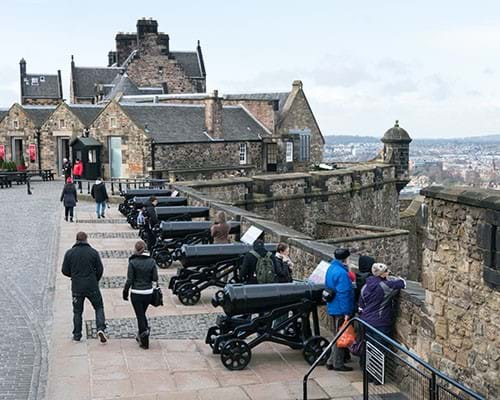
Argyle Battery
Stand on a six-gun battery built in the 1730s. Its open outlook to the north provided an ideal vantage point for defending the castle. The cannons in position date from about 1810, the time of the Napoleonic Wars with France. Take a moment to admire the sweeping views over the city and towards Fife.
